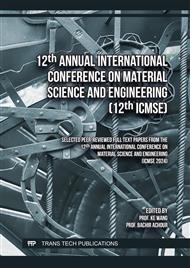p.59
p.65
p.71
p.77
p.83
p.91
p.99
p.107
p.117
Experiment and Data Analysis of Spheres Falling in Bounded System
Abstract:
In an open or unbounded system, when a solid sphere freely falls into a liquid, it accelerates until it reaches a terminal velocity. At this point, the gravitational force, buoyant force, and viscous drag acting on the sphere are balanced. Stokes' law describes that in a laminar flow state, the viscous drag on the sphere is proportional to its radius, velocity, and viscosity coefficient. In this paper, an experimental system was constructed and the vertical and horizontal positions of spheres were measured with different sizes and densities in liquids of different diameters and viscosities, and the vertical and horizontal positions, velocities, and accelerations of spheres were analyzed. The data analysis shows that the sphere is not only subjected to the viscous drag and but also the boundary forces from the system. This work will have a significance in modeling and computer simulation of accurate measurement of liquid viscosity.
Info:
Periodical:
Pages:
83-90
Citation:
Online since:
June 2025
Authors:
Keywords:
Price:
Сopyright:
© 2025 Trans Tech Publications Ltd. All Rights Reserved
Share:
Citation:



